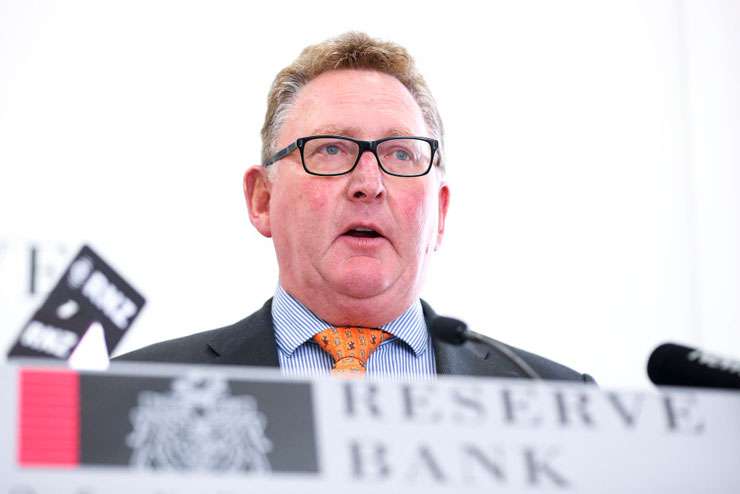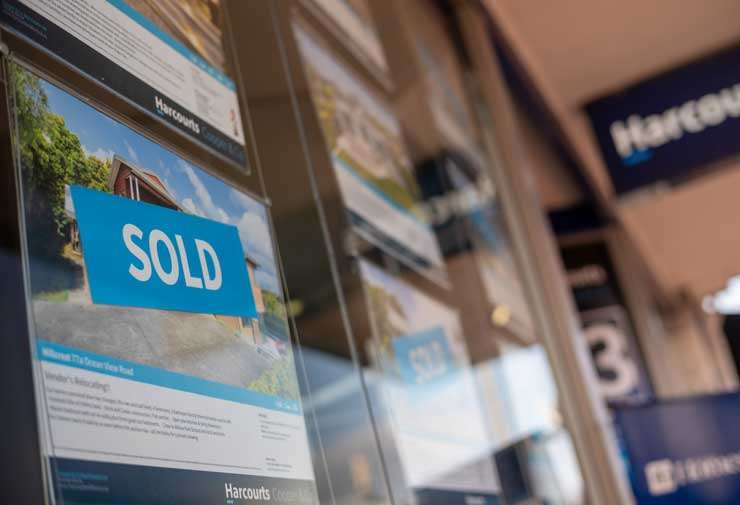New Zealand banks have increased their standard mortgage rates this year by up to three times this month’s 0.25% hike in the Official Cash Rate (OCR).
The biggest rise in one-year fixed rates, the most popular rate in New Zealand, comes from Kiwibank, according to Interest.co.nz data analysed by CoreLogic NZ.
The data shows that Kiwibank increased its standard rates 76 basis points (0.76%), starting on 19 July 2021, says Nick Goodall, head of research at CoreLogic.
The lowest rate rise among the top 10 lenders was SBS Bank, which has only added 36 basis points this year (0.36%), making it the lowest of all of the top 10 mortgage lenders.
Start your property search
Earlier this month, the Reserve Bank raised the OCR 25 basis points, bringing to an end a seven-year period of falling interest rates. The decision – made partly in response to rising house prices – had been long expected, with many banks starting the process of raising mortgage rates some months ago.
The Reserve Bank has signalled that there will be further hikes to the OCR, and this week's news that annual inflation hit 4.9%, well above the Reserve's forecast of 2.5%, will put further pressure on banks to raise rates.
Yesterday, Westpac was the first to jump, pushing its one-year rate to 2.9%.
Goodall notes that one-year interest rates are by far the most popular with home-owners. “We’ve got upwards of 79% (of mortgage borrowing) on one year or less,” he says, adding that the creep in mortgage rates has seen borrowers start to fix for longer periods.

CoreLogic head of research Nick Goodall says the banks base their rate decisions on more than just the OCR. Photo / Supplied
Goodall says HSBC was the first bank to put up its rates this year. It raised its standard one-year rate by a total of 70 basis points (0.7%) starting on April 5.
July 19 was an auspicious day for mortgage rate rises with ANZ, BNZ, Westpac, and Co-operative banks kicking off their rate rises. The standard one-year rate for each of the banks have risen by 66 basis points (0.66%) since then, except for ANZ that has increase by 60 basis points (0.60%).
Heartland Building Society and SBS both jumped on board the rate rise train on August 2, raising their rates respectively by 50 basis points (0.50%) and 36 basis points (0.36%).
The very last to move was the TSB, which increased 60 basis points on August 16.
Those rate rises, says mortgage broker Rupert Gough, founder of Mortgage Lab, translated on average to one-year rates of 2.75%, from around 2.19% in July (although they did hit 2.85% at one point).
Goodall points out that it’s not just the OCR that the banks base their mortgage interest rates on. “They’re not funded solely by the OCR. There’s other financial pressures that banks are facing, so they have adjusted in line with international funding costs and other local funding costs.”

The Reserve Bank governor Adrian Orr. The Reserve has signalled that further rate rises are on the cards. Photo / Getty Images
Gough adds that most banks typically base their mortgage rates on 90-day bill rates, which affect what they pay to borrow money, which is one of the reasons that mortgage rates have risen by more than the OCR this year. “They have to put (rates) up if the cost of funds increases.”
Not all OCR or 90-day bill rates are passed onto homeowners. There is also the question of marketing. “From a marketing perspective, it’s best to be the bank that pushes its rates up last,” says Gough.
Grabbing headlines often drives decisions. For example, on July 16 this year in the same week as the four Australian owned banks raised their home loan rates, Kiwibank grabbed the headlines by dropping its two-year rate, by six basis points to 2.49 per cent. At the same time, it raised its variable home loan rate from 3.4 per cent to 3.75 per cent. The bank’s latest rise, therefore, does need to be seen in the context of earlier discounting.
Not all customers choose their mortgage on the rates, says Goodall. Some have a particular affinity with or loyalty to a particular bank or get sweeteners for choosing that bank.
One notable aspect of the current mortgage market, says Gough, is that there is much more variation in interest rates over the past six months than is usual. So, it is worth shopping around. “There is actually a bit of a spread between the banks, particularly the long end. So, the three to five years where we've seen the difference of sort of 0.3% to 0.5% difference in what they're offering.”

Low interest rates have been a contributing factor in house price rises. Photo / Fiona Goodall
He points out that typically the “carded” (published) rates that customer can get direct from the bank are often less than the specials available through mortgage brokers. “The carded rates are the standard rates,” he says. A mortgage broker will typically get 0.5% to 0.6% off those rates although buyers who only have a 20 deposit or less, will struggle to get the best discounts.
Gough points out that property transactions can take weeks. So even if you lock a rate in, it may not be the best rate in two or three weeks’ time when you finally settle.
What’s more Reserve Bank research published in August tracked mortgage rate changes showed that all the banks typically passed on OCR rates within six months, if not immediately.
The data showed that a 1% change in the OCR typically moves average two-year mortgage rates by 0.34% within one month. It found the pass-through from changes in monetary policy increase over time, with the peak impact on mortgage rates about 6 months after the change in the OCR.
“At that point about 0.80% (percentage points) of the initial 1% change in the OCR is typically passed through in higher or lower mortgage rates,” the report said.


















































































